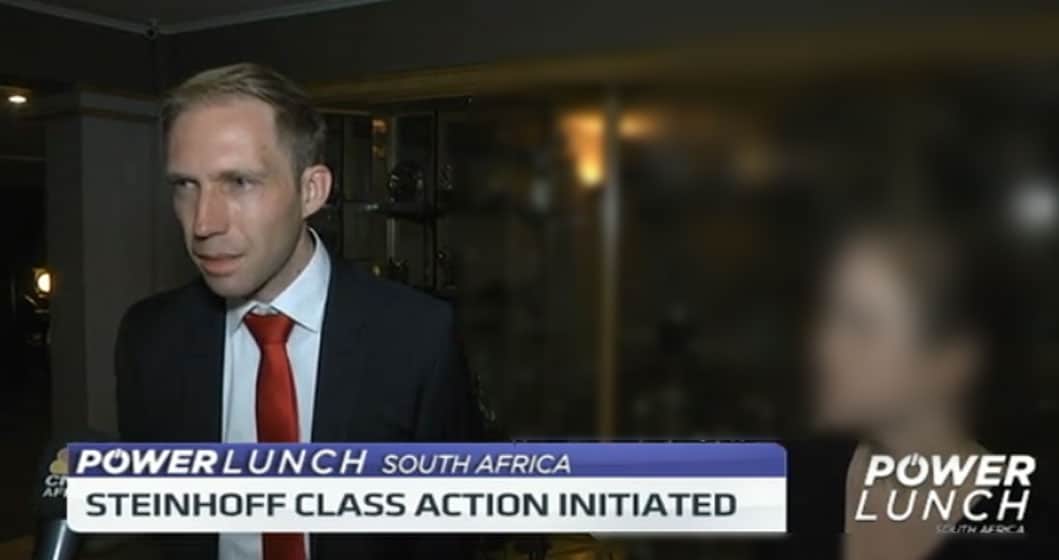The Steinhoff investor lawsuits and the billion-euro settlement: a commentary
December 5, 2017: The beginning of the judicial follow-up
When Steinhoff International Holdings N.V. (Steinhoff) admitted to years of accounting manipulations and announced the resignation of CEO Markus Jooste on December 5, 2017, the judicial follow-up to one of the biggest international accounting scandals of recent decades began. The Steinhoff share price (ISIN: NL0011375019) plummeted by 95% at the time. Steinhoff lost over 12 billion euros in market capitalization within a few days.
The scandal became a political issue in South Africa, especially since the country’s largest state pension fund (Government Employees Pension Fund, GEPF) in turn had significant investments in Steinhoff and was thus itself massively affected. Ex-CEO Jooste was questioned in the South African parliament. A large number of institutional and retail investors sued for damages in the Netherlands, Germany and South Africa. One of the largest and most complex securities disputes took shape across borders and in many different court proceedings. WEISSWERT attorney Maximilian Weiss also acted for aggrieved investors in Germany, South Africa and the Netherlands.

Attorney Maximilian Weiss on CNBC Africa’s Power Lunch
February 15, 2022: The end of the legal disputes with a billion-euro settlement
The situation at Steinhoff was complex. Nevertheless, the aggrieved shareholders and other aggrieved parties were able to reach an overall global settlement with Steinhoff in the amount of 1.43 billion euros – and just over 4 years after the accounting manipulations became known to the public. Considering the complex situation at Steinhoff, this result is a great success.
Investors who have not filed a lawsuit can now file their claims by May 15, 2022 and receive partial compensation for their losses. One of the most complex disputes in the field of international securities litigation has thus come to an astonishingly swift and gratifying end. But what made this litigation and its resolution so special? Why was it so complex? A five-point commentary:
1. The settlement amount
The Steinhoff settlement is extraordinary considering the settlement amount. It is the highest settlement ever reached outside the United States in securities litigation. It surpasses the previous record settlement in Fortis/Ageas (1.3 billion euros). Approximately 800 million euros of this amount is reserved for investors who purchased Steinhoff financial instruments in the secondary market. D&O insurers as well as auditing firms have contributed approximately 110 million euros to this.
2. Legal proceedings in many jurisdictions
In the Steinhoff case, aggrieved shareholders found themselves in three different jurisdictions: the Netherlands, South Africa and Germany:
− In the Netherlands, Steinhoff had its legal (and tax) domicile.
− In South Africa, Steinhoff had its administrative headquarters and a secondary listing of Steinhoff shares on the Johannesburg Stock Exchange. In addition, the original listed holding company had its registered office here prior to a restructuring in 2015 and was also listed exclusively in Johannesburg until then.
− Steinhoff had its initial listing of Steinhoff shares in Frankfurt am Main since December 7, 2015, which is why a tort jurisdiction for aggrieved shareholders also existed in Germany.
Investors have sued for damages in all three of these jurisdictions. The challenge for Steinhoff as well as for the investors was to find a cross-border solution for all proceedings in all countries. In the Netherlands, for example, foundations set up specifically for this case sued under Dutch law (Stichtings), which would have been suitable for a collective settlement under the Dutch law on the collective settlement of mass claims (WCAM, Wet Collectieve Afwikkeling Massaschade).
In Germany, attorney Maximilian Weiss applied for the initiation of capital investor model proceedings before the Higher Regional Court of Frankfurt on behalf of many aggrieved investors, which after a long tug-of-war was also opened in May 2019 by order of reference of the Regional Court of Frankfurt. In South Africa, a securities class action was finally filed for the first time before the South Gauteng High Court in Johannesburg. While the proceedings initiated in the Netherlands and Germany are well-tried, the application to certify a class action in South Africa represented a legal pioneering achievement.
3. Many plaintiff groups: Too many cooks spoil the broth?
Not only were lawsuits filed in different countries. In particular, the representation of institutional investors was also spread across several large plaintiff groups whose interests were anything but identical. It was therefore not only necessary to find a solution with the Steinhoff Group and other potential payers such as D&O insurers and auditors, but also to create unity on the part of the plaintiff groups. The fact that so many different parties had to be involved made reaching a global overall settlement a major challenge in this matter. The fact that, despite the complexity and many different groups involved, a settlement was reached after just over four years must be considered a great success.
4 Securities Class Action in South Africa
From a practitioner’s point of view, the “class action” applied for in South Africa was quite exceptional. There was no comparable case in South Africa. And while there have been class actions in South Africa before, they were very few – and they had been initiated in completely different areas of law. Never before has it been tested to apply for a securities class action in South Africa. The South Gauteng High Court has dismissed the class action application. Nevertheless, the proceedings in South Africa represent a milestone in the history of South African law on collective redress. However, parts of the court’s reasoning are highly regrettable. For example, the court held that shareholders could not be compensated for damages due to the “principle of reflective loss” (which is also well known in England). In our opinion, this was a fatal misjudgment which in no way does justice to the nature of the claim of shareholders who acquired shares on the basis of fraud and only became shareholders as a result of misleading and untrue statements.
5. the overall settlement by way of two parallel restructuring proceedings in the Netherlands and South Africa is unique
The design and the process of the settlement was highly complex. It was ultimately embedded in two restructuring proceedings, on the one hand a “SoP” (Suspension of Payment Proceedings) under Dutch law, and on the other hand a “s155” proceeding under South African law (South African Section 155 Proceedings). In this respect, not only the parties had to agree to conclude a global overall settlement. The courts in the Netherlands and South Africa also had to be persuaded to accept the settlement as a necessary component of the restructuring efforts in different and interlinked proceedings. Never before have investor claims been satisfied in such a complex structure.
As a result, this global settlement serves all parties involved. Without such a settlement, Steinhoff’s insolvency would have been inevitable. Jobs would have been lost and investors would have received significantly lower compensation. Against this background, the now reached settlement in re Steinhoff has brought global peace and can be considered a significant success for all parties involved.
About the Author
Maximilian Weiss
Maximilian Weiss is German attorney at law (Rechtsanwalt) and the managing director of the German investor law firm WEISSWERT. Max exclusively advises on banking and capital markets law as well as on financial market related antitrust law. His practice areas include, in particular, shareholder disputes, claims for misadvice and cases of investment fraud as well as asset tracing and asset recovery. Max is experienced in dealing with mass proceedings and instruments of collective redress.
His clients include both companies and individuals, in particular institutional investors, private investors and bank clients.
About the Author
Maximilian Weiss
Maximilian Weiss is German attorney at law (Rechtsanwalt) and the managing director of the German investor law firm WEISSWERT. Max exclusively advises on banking and capital markets law as well as on financial market related antitrust law. His practice areas include, in particular, shareholder disputes, claims for misadvice and cases of investment fraud as well as asset tracing and asset recovery. Max is experienced in dealing with mass proceedings and instruments of collective redress.
His clients include both companies and individuals, in particular institutional investors, private investors and bank clients.








